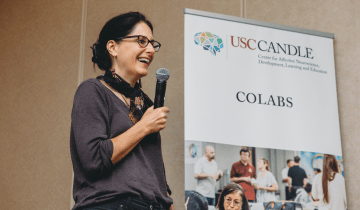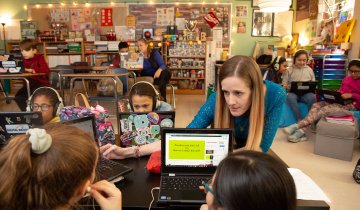Dear Friends of Rossier,
For much of my life, I’ve been either a student or a teacher. But I’ve always been a learner.
As a young student, I didn’t give much thought to the process of learning. Like many of my classmates, I just loved school. And when I was excited by a teacher or a particular subject, things clicked. I was motivated to go deeper. But now we are learning more about the cognitive principles at play in these “aha” moments.
In this issue, we bring you stories that illustrate the science of learning — and by that, I mean how students come to understand new ideas and what motivates them to become more engaged.
Our faculty are using MRI brain scans and EKG readings to investigate those “aha” moments, and their research shows that positive emotions activate brain mechanisms that can lead to deeper learning.
We know now that learning requires head and heart, bolstered by mindful practices that emphasize students’ physical and psychological well-being. Students can’t learn if they do not feel emotionally supported. And this presents important implications for how we teach.
When this research in cognitive science is translated into everyday practices in teaching and learning, the outcomes — as described in these pages — range from higher math and English scores for high school students to greater persistence in STEM subjects for girls to an increase in confidence and self-worth among students facing severe hardship in their home lives.
Understanding and implementing advances in learning science can make us better students, teachers and lifelong learners. By changing our ways of thinking as educators, we are advancing the field and transforming the lives of students.
Fight On!
KAREN SYMMS GALLAGHER, PHD
Emery Stoops and Joyce King Stoops Dean
USC Rossier School of Education




